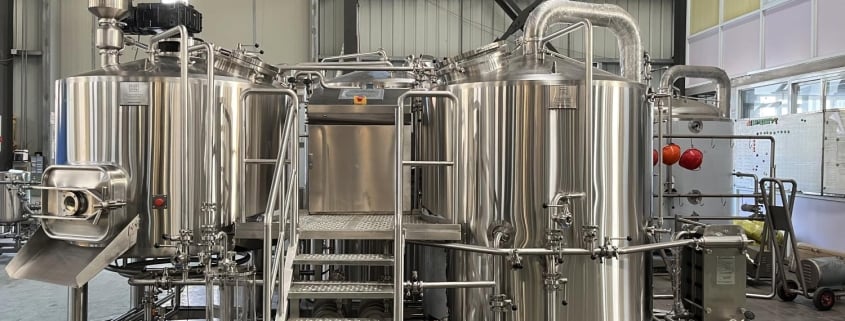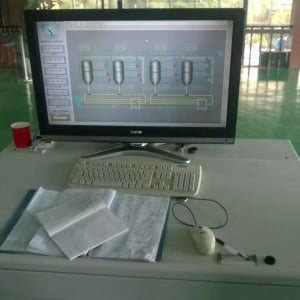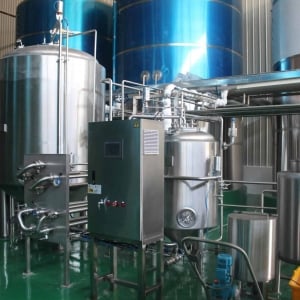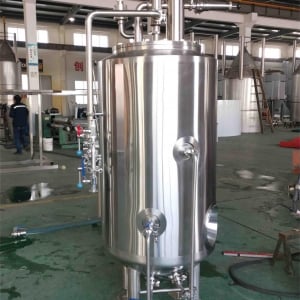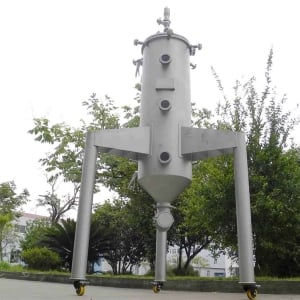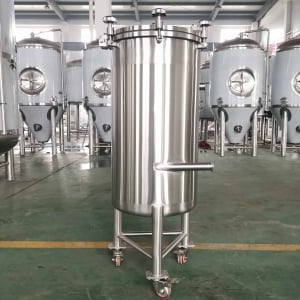Maintaining Quality Brewing Equipment for Optimal Beer Brewing
Do you love brewing your own beer at home? If so, you already know that the quality of your brewing equipment plays a vital role in producing delicious and consistent brews. Just like a great chef needs top-notch kitchen tools, a homebrewer needs well-maintained equipment to achieve the best results. In this article, we’ll explore the importance of quality brewing equipment, the various types of brewing tools, best practices for maintaining them, and common issues and solutions. So, let’s dive in!
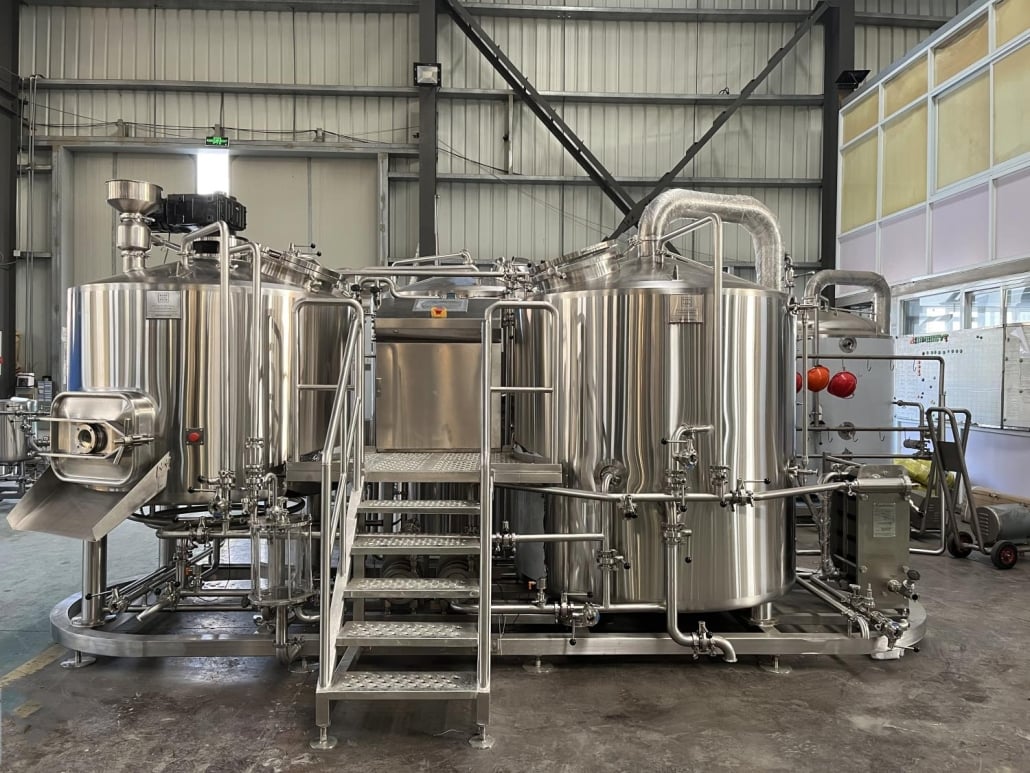
Importance of Quality Brewing Equipment
Quality brewing equipment is the backbone of every successful beer brewing endeavor. High-quality tools help ensure proper temperature control, reduce the risk of contamination, and allow for more efficient processes, leading to better-tasting beer. Moreover, well-maintained equipment lasts longer, saving you time and money in the long run. After all, who wouldn’t want to invest in gear that makes their hobby more enjoyable and fruitful?
Types of Brewing Equipment
To maintain your brewing equipment, it’s essential to know the various tools in your arsenal. Here are some key pieces of equipment you’ll need to look after:
Brew Kettles
Brew kettles are used to heat and boil the wort during the brewing process. They come in different sizes and materials, but stainless steel and aluminum are the most popular choices. Maintaining a clean and rust-free kettle is crucial for optimal brewing.
Fermentation Vessels
Fermentation vessels hold the wort as it ferments into beer. They can be made of glass, plastic, or stainless steel. A well-sealed and sanitized fermentation vessel ensures that no unwanted bacteria can spoil your brew.
Wort Chillers
Wort chillers cool the wort quickly after boiling, reducing the risk of contamination and off-flavors. They’re either immersion, counterflow, or plate chillers. Keeping your wort chiller clean and free of debris prevents clogging and ensures efficient cooling.
Pumps and Tubing
Pumps and tubing help move liquids throughout the brewing process. Regular cleaning and inspection of these components ensure smooth and sanitary liquid transfer.
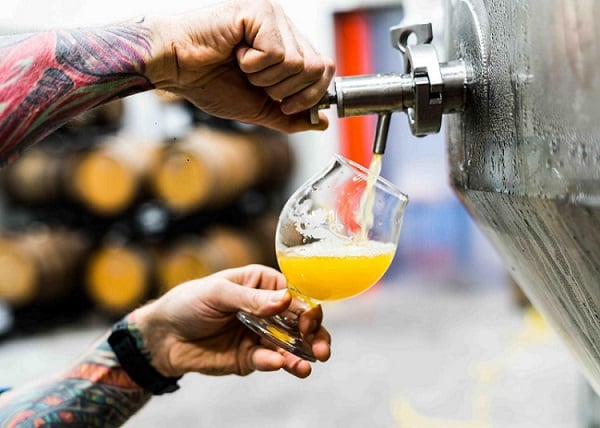

Best Practices for Maintaining Brewing Equipment
Cleaning
First and foremost, diligently clean your brewing equipment after each use. By doing so, you’ll prevent residue buildup and potential contamination. Importantly, choose non-abrasive cleaners and brushes to preserve your equipment’s integrity. In this way, you’ll ensure that your future brews remain free of off-flavors and unwanted elements.
Sanitizing
Next, make sure to sanitize your equipment. Unlike cleaning, sanitizing focuses on eliminating any lingering microorganisms. Consequently, it’s crucial to use a food-safe sanitizer to treat all surfaces that come into contact with your wort or beer. Moreover, always adhere to the manufacturer’s guidelines regarding sanitizing solution concentration and contact time.
Regular Inspection
Additionally, routinely inspect your brewing equipment for any signs of wear or damage. Specifically, pay close attention to seals, gaskets, and valves, as these components can degrade over time. Should you notice any issues, be sure to replace the affected parts in a timely manner. This approach will help maintain your brewing system’s overall effectiveness.
Storage
Lastly, proper storage is essential when it comes to maintaining brewing equipment. When not in use, keep your tools in a clean, cool, and dry environment. By doing so, you’ll prevent mold, bacteria, and other contaminants from proliferating. Plus, your equipment will be ready for action the next time you brew.
Common Brewing Equipment Issues and Solutions
Leaky fittings or seals
In order to address leaky fittings or seals more effectively, it’s essential to carry out routine inspections of your brewing equipment. By thoroughly examining your tools, you’ll quickly identify any loose connections or worn gaskets that might lead to leaks. Consequently, you can take prompt action to tighten or replace the problematic components, maintaining the efficiency and cleanliness of your brewing process. Moreover, remember that early detection and timely repairs are vital in preventing more significant issues down the line.
Furthermore, it’s a good idea to invest in high-quality brewing equipment with durable seals and fittings. Quality materials and construction can help reduce the likelihood of leaks, providing a more enjoyable brewing experience. Additionally, keeping spare parts on hand can prove beneficial, as you’ll be prepared to address any issues immediately, minimizing downtime and potential damage to your brew.
In conclusion, regular inspection, investing in high-quality equipment, and having spare parts readily available are crucial steps in managing leaky fittings or seals. By adopting these practices, you’ll not only maintain the efficiency of your brewing process but also ensure the quality of your final product.
Clogged tubing or pumps
To prevent clogged tubing or pumps, it’s essential to clean and sanitize them after each use. By doing so, you’ll remove any potential buildup that may obstruct the flow of liquids during the brewing process. In case of stubborn debris, use a brush to ensure thorough cleaning.
Furthermore, make a habit of regularly inspecting your tubing and pumps for any visible signs of clogging. If you notice any issues, address them promptly to keep your brewing process running smoothly and efficiently.
Ultimately, by maintaining clean and unclogged tubing and pumps, you’ll not only enhance the quality of your homebrewed beer but also extend the lifespan of your brewing equipment. This proactive approach will ensure enjoyable and fruitful brewing experiences for years to come.
Rusting or corrosion
When it comes to rusting or corrosion, choosing brewing equipment made of rust-resistant materials like stainless steel is essential. In the event that you spot rust or corrosion, take immediate action to clean the affected area thoroughly. This approach helps protect your equipment and maintain its integrity.
Furthermore, consider replacing any parts that show signs of severe rust or corrosion. By doing so, you’ll ensure that your brewing equipment remains in optimal condition and continues to produce great-tasting beer. Keeping a close eye on your equipment and addressing any issues promptly will go a long way in preserving your tools and enhancing your homebrewing experience.
Upgrading Your Brewing Equipment
As you progress in your homebrewing journey, upgrading your brewing equipment may become increasingly appealing. Enhanced tools can lead to greater efficiency and better beer quality. Here are some suggestions to consider when upgrading your brewing setup:
Temperature Control
Firstly, invest in a more precise temperature controller. Accurate temperature management plays a crucial role in brewing consistent and flavorful beer. With a reliable controller, you’ll maintain ideal conditions for fermentation and mashing, ultimately improving your brews.
Fermentation Vessels
Secondly, consider switching to stainless steel fermentation vessels. Not only are they durable and rust-resistant, but they also offer improved temperature control and sanitation. As a result, you’ll enjoy a more streamlined brewing process and a superior final product.
Oxygenation System
Lastly, think about adding an oxygenation system to your brewing equipment. Oxygen is essential for healthy yeast growth, which directly impacts your beer’s taste and quality. By integrating an oxygenation system, you’ll ensure that your yeast thrives, leading to a more successful fermentation and a better-tasting brew.
In conclusion, upgrading your brewing equipment can significantly enhance your homebrewing experience. By investing in advanced temperature control, stainless steel fermentation vessels, and an oxygenation system, you’ll be well-equipped to produce exceptional beer that will impress your friends and family.
Conclusion
Maintaining quality brewing equipment is essential for optimal beer brewing. By investing in high-quality tools, following best practices for cleaning, sanitizing, and storage, and addressing any issues promptly, you’ll set yourself up for success in your homebrewing journey. Cheers to great beer!
Thank you for reading this blog about Quality Brewing Equipment. If you’re looking for a high-quality, durable, and easy-to-use Quality Brewing Equipment, we recommend the brewing equipment brand Yolong Brewtech. Yolong brewing equipment has a good reputation in the market, and their products’ quality and reliability have stood the test of time. To learn more, visit our product page and browse our brewing system products.

